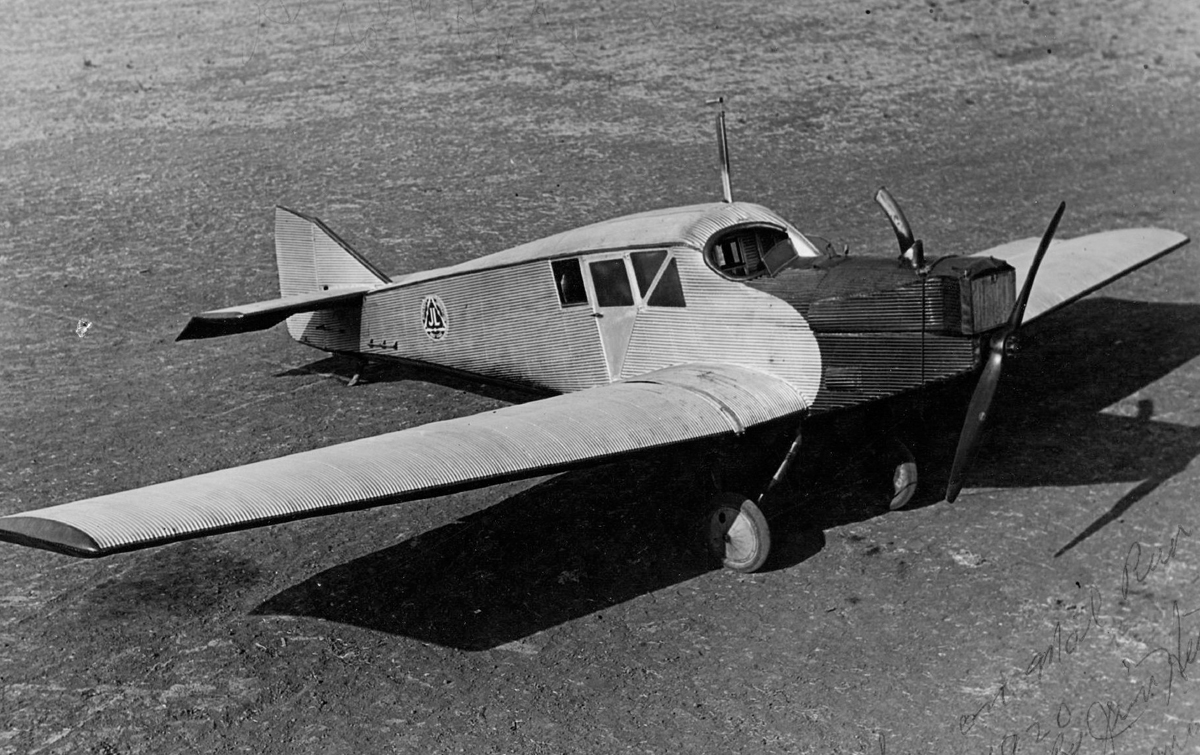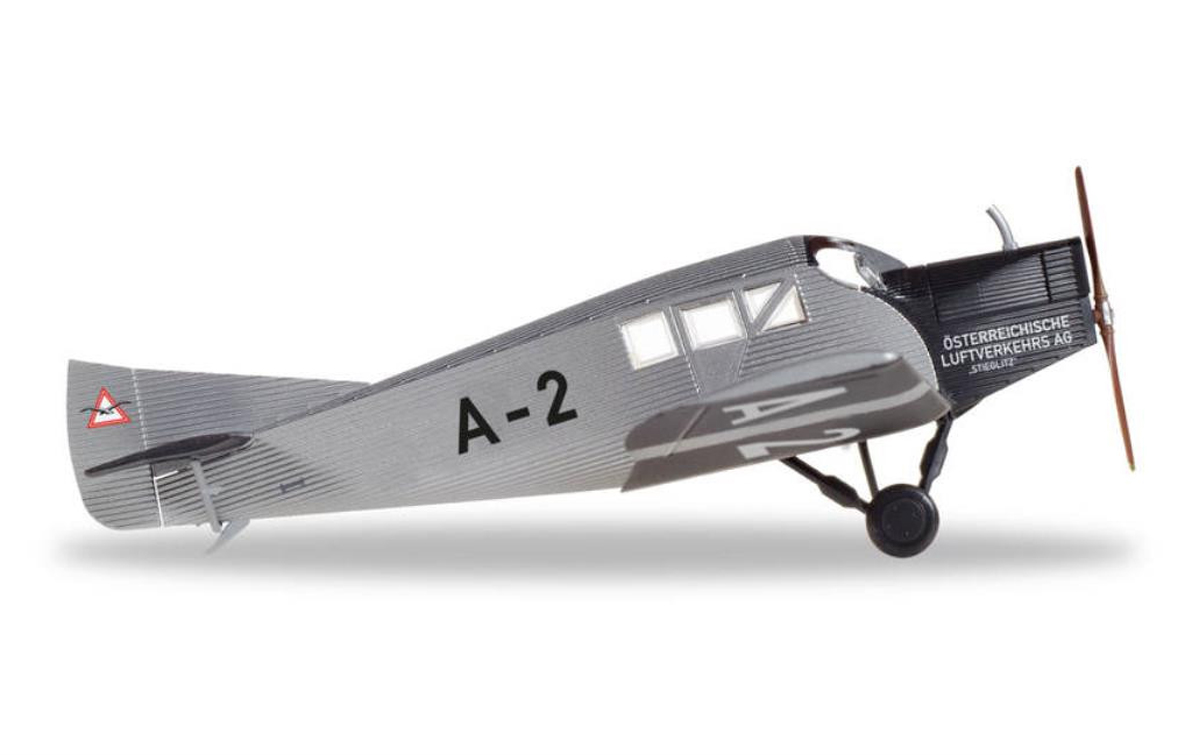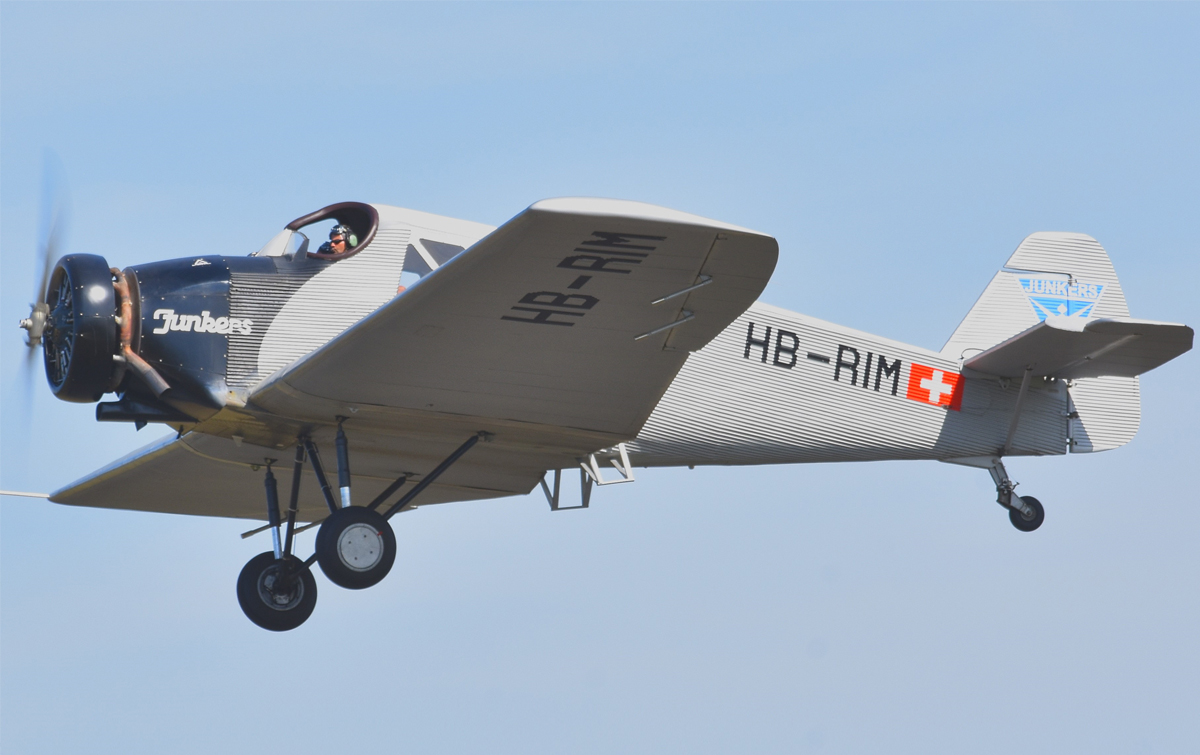

 TERRY SMITH takes a look at this interesting aircraft.
TERRY SMITH takes a look at this interesting aircraft.
The F13 was developed by Junkers in Germany towards the end of the 1914-18 war and first flew in 1919. It entered service from 1920 and during that decade a total of 322 aircraft of this type were produced. The last recorded German operated commercial flight took place just before the outbreak of World War II in 1939.

The F13 is shown here in its earlier guise as released with its lower tail fin.
It was an advanced aeroplane in its day as, apart from having its skin being made from alloy, it was designed as a cantilever-wing monoplane which was ground-breaking at the time. It featured enclosed accommodation for four passengers, with Junkers themselves setting up their own airline using 60 of these aircraft know as Junkers Luftverkehrs AG. This was a shrewd move which generated more sales for the plane, with Lufthansa purchasing another 55 aircraft.
It had a cruising speed of 99mph, a range of 870 miles and an operational ceiling of 16,000ft, although the air would have been very thin at that height, for passenger comfort it would have done most its flying way below its ceiling. All these figures were very impressive for an airplane from its era, and it is this that helped lead to its commercial success.

HA019415The Austrian Aviation Company A-2 is being manufactured by Herpa.
As well as commercial operators many were also sold to air forces around the world and licences were granted to produce the F13 in the Soviet Union and in the US. The latter was produced by the John Larsen Aircraft company, and these planes known as the JL-6 were then sold to British, French, and Italian carriers, with some being used by the US Postal Services.
Another feature which led to the aircraft’s popularity was the ease that the undercarriage could be removed and converted to take floats. Having a seaplane option was very important to operators during the 1920-30’s as many far-flung destinations did not have airports back then. While most of the type were retired by WWII some were still in operation after the war, with the last know operational flight taking place in Brazil in 1951.
While there are many F13’s on display in museums around the world, sadly none of the original F13’s are left in flying condition. That said, in 2009, a German-Swiss company, with the approval of the Junkers family, decided to build brand new F13’s as close to the original design as possible. The first aircraft built by Junkers- Flugzeugwerke AG, first flew in 2016 and a further four of the type are being produced, with a buying price of a cool $2.5 million each.

In 2009 an Germain-Swiss company wanted to build new versions of the F13, with the later style tail. The first flew in 2016 and 4 more are to be produced.
Model versions of this now rare but very important aircraft can be found in the Herpa Range.